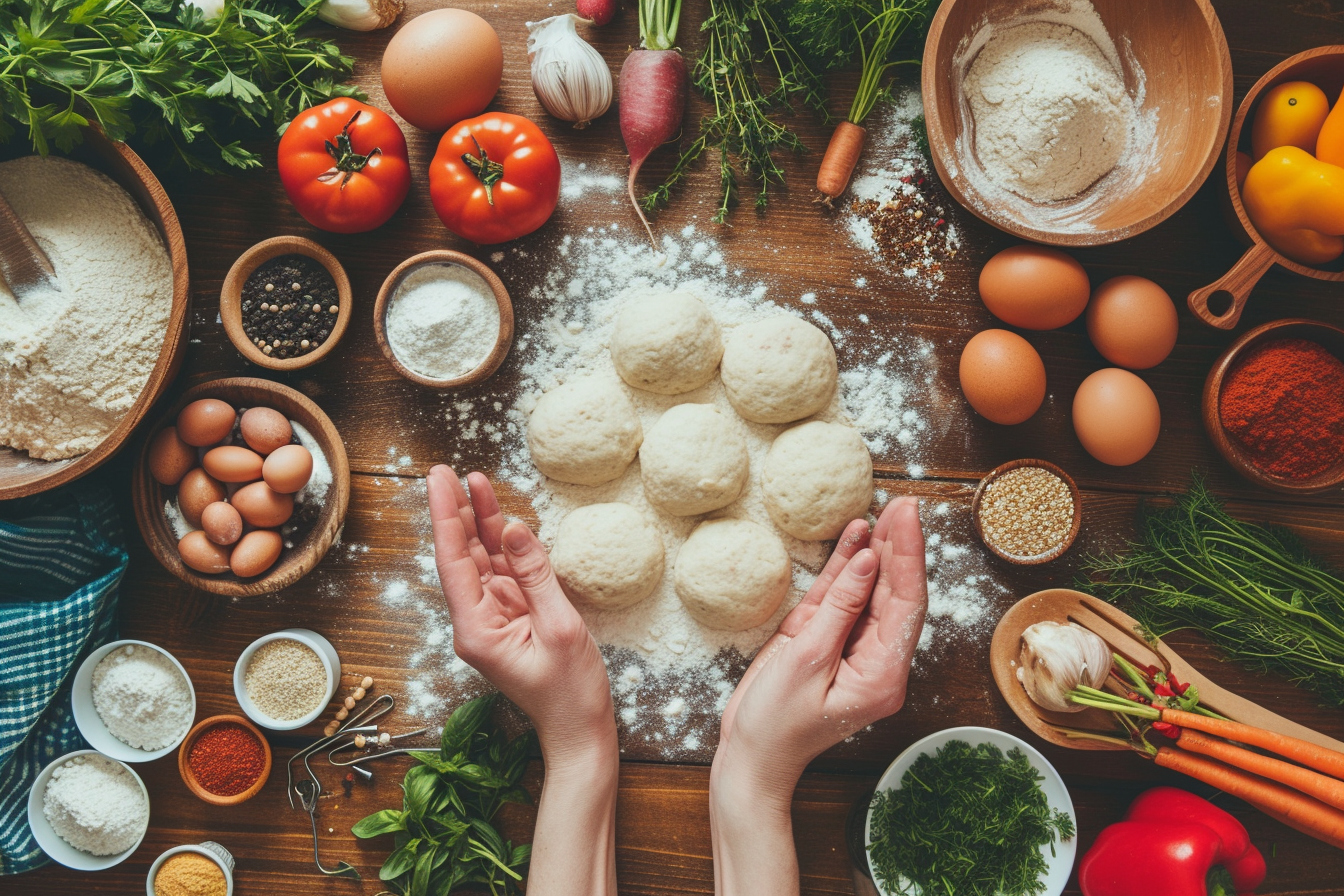The world of cuisine continues to evolve with an increasing awareness of dietary needs and preferences, among which the gluten-free diet has emerged prominently. Deciding to forgo gluten need not mean sacrificing flavor or enjoyment in meal preparation. Whether due to celiac disease, gluten sensitivity, or personal preference, the techniques for creating sumptuous gluten-free dishes are diverse and accessible. This article delves into the art of gluten-free cooking, offering practical tips and strategies for crafting delectable and health-conscious meals.
Understanding gluten-free cooking
Gluten is a group of proteins found in grains such as wheat, barley, and rye. For those avoiding gluten, the key is to find suitable substitutions that not only replicate the texture and flavor of gluten-containing foods but also contribute nutritional value.
Focus on whole, naturally gluten-free foods
Whole foods that are naturally gluten-free include fruits, vegetables, meat, poultry, fish, beans, legumes, and most dairy products. Starting with these as a base for meals ensures a nutrient-dense diet without the risk of gluten contamination. These foods also provide a wide spectrum of vitamins, minerals, and fiber that are essential to a healthy diet.
Explore diverse gluten-free grains
Several grains and starches lack gluten and serve as excellent replacements. Quinoa, rice, millet, buckwheat, sorghum, corn, and tapioca are among the many options. Each grain offers unique flavors and textures that can inspire new culinary creations. Cooking methods like boiling, steaming, and sautéing can be used effectively with these grains.
Rice and quinoa, for instance, can soak up flavors from broths and seasonings, serving as a perfect canvas for a variety of dishes. When preparing these grains, a simple technique is to toast them lightly in a dry pan before adding liquid. This process enhances their nutty flavor profile, adding depth to the final dish.
Utilize gluten-free flours and binding agents
When baking, a primary challenge is to recreate the structure that gluten provides. Blending different gluten-free flours can mimic the properties of gluten to an extent. Almond flour, coconut flour, rice flour, and oat flour, certified gluten-free, are popular choices.
Xanthan gum and guar gum are two binding agents often used in gluten-free recipes to provide the elasticity and stickiness that gluten typically contributes. Another alternative is to use ingredients like eggs or chia seeds, which can also act as binders in baking.
Innovative techniques in gluten-free cooking

Mastering gluten-free pasta and breads
Crafting gluten-free pasta and bread is a venture that rewards patience and precision. Use a mix of flours to create a more balanced texture in pasta dough. For instance, combining tapioca flour with rice flour can yield a satisfying chewiness similar to traditional pasta. Remember to generously salt the water when boiling gluten-free pasta as it greatly enhances the flavor.
Bread is often the most missed item in a gluten-free diet, but by utilizing clever techniques, one can create excellent alternatives. Proofing yeast properly, allowing bread to rise in a warm, draft-free environment, and using a stand mixer to achieve a thorough mix are all crucial steps. Baking the bread in a preheated cast iron skillet or Dutch oven can also create a desirable crust, mimicking artisanal bread qualities.
Incorporating fermentation in gluten-free cooking
Fermentation not only adds complexity to the flavor profile of gluten-free foods but can also improve their digestibility and nutritional value. Fermented gluten-free grains like buckwheat or sorghum can be used to create sourdough breads that carry a delicious tang.
Creating a gluten-free sourdough starter involves mixing gluten-free flour with water and allowing natural yeasts to develop over several days. This starter serves as the base for many fermented gluten-free recipes. Using a mature starter in a recipe can impart a depth of flavor that is otherwise hard to achieve in gluten-free baking.
Enhancing flavors in gluten-free dishes
Embrace the power of herbs and spices
Aromatic herbs and robust spices should be the best friends of anyone cooking gluten-free. They can transform a dull dish into an extraordinary culinary experience. For example, toasting spices before using them in a recipe can bring out their oils and increase their aroma and taste. Fresh herbs can be finely chopped and added towards the end of the cooking process to preserve their delicate flavors.
Innovate with marinades and sauces
Marinades and sauces are vital for adding moisture and flavor to gluten-free meals. When marinating proteins such as chicken or tofu, it is essential to allow enough time for the flavors to penetrate.
Creating rich gluten-free sauces often requires reducing broths or stocks to concentrate their flavors. Be sure to use gluten-free soya sauce or tamari when preparing Asian-inspired dishes. Additionally, thickening sauces traditionally reliant on wheat flour can easily be done with cornstarch or gluten-free all-purpose flour blends.
Balancing nutrition and pleasure
Prioritize nutritionally dense ingredients
Select ingredients that are high in fiber, vitamins, and healthy fats to enhance the nutritional profile of gluten-free meals. For example, using almond flour in place of regular flour not only avoids gluten but also adds protein and healthy fats to the dish.
Craft well-balanced meals
Balance in gluten-free cooking extends beyond just excluding gluten; it includes ensuring that each meal provides a variety of nutrients. Aim to include a protein source, healthy fats, and plenty of fruits and vegetables to create a rounded meal. This not only is beneficial for overall health but also contributes to the satisfaction and satiety of the meal.
In sum, gluten-free cooking requires exploration, creativity, and a willingness to experiment with new ingredients and methods. It presents an opportunity to embrace a wide array of whole foods, alternative grains, and innovative techniques to generate meals that delight the palate while catering to specific dietary needs.든 With the right approach, gluten-free cooking can unveil a world of rich flavors and textures, proving that a diet free from gluten can still be abundant in taste and nourishment.







Leave a Reply